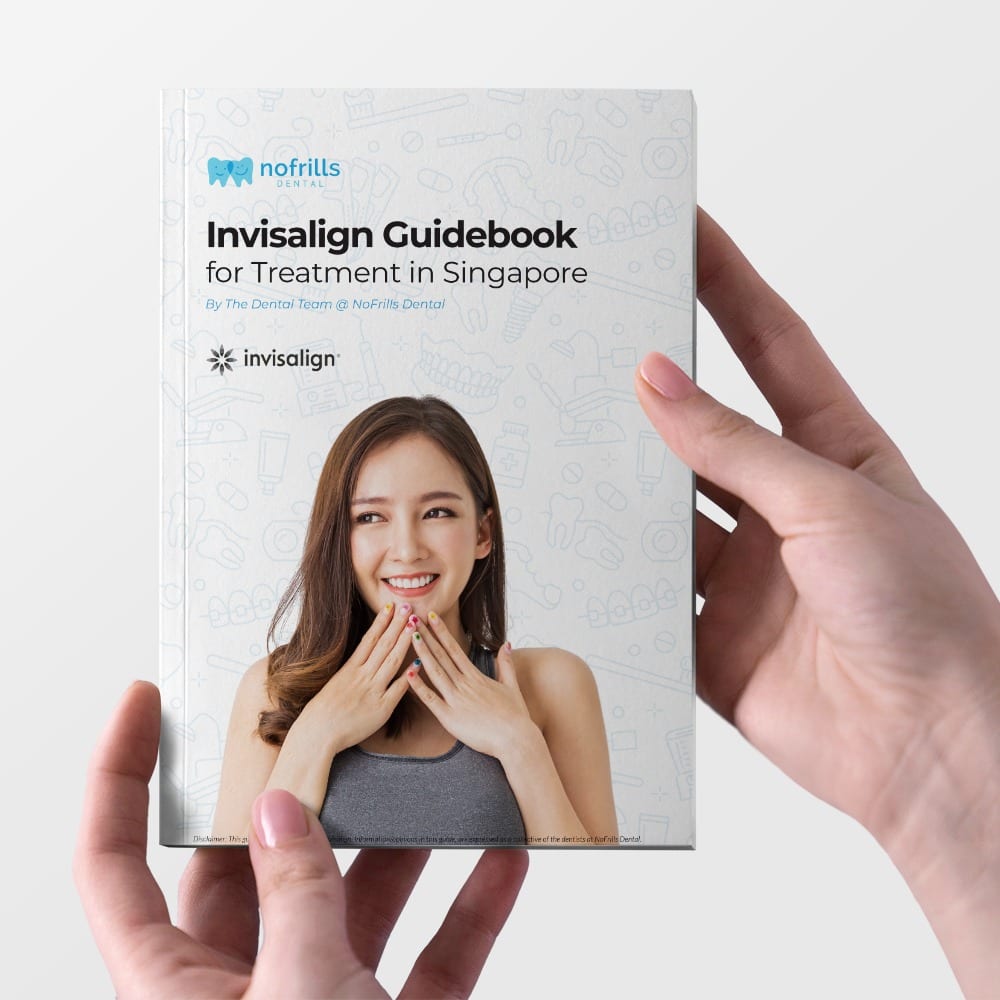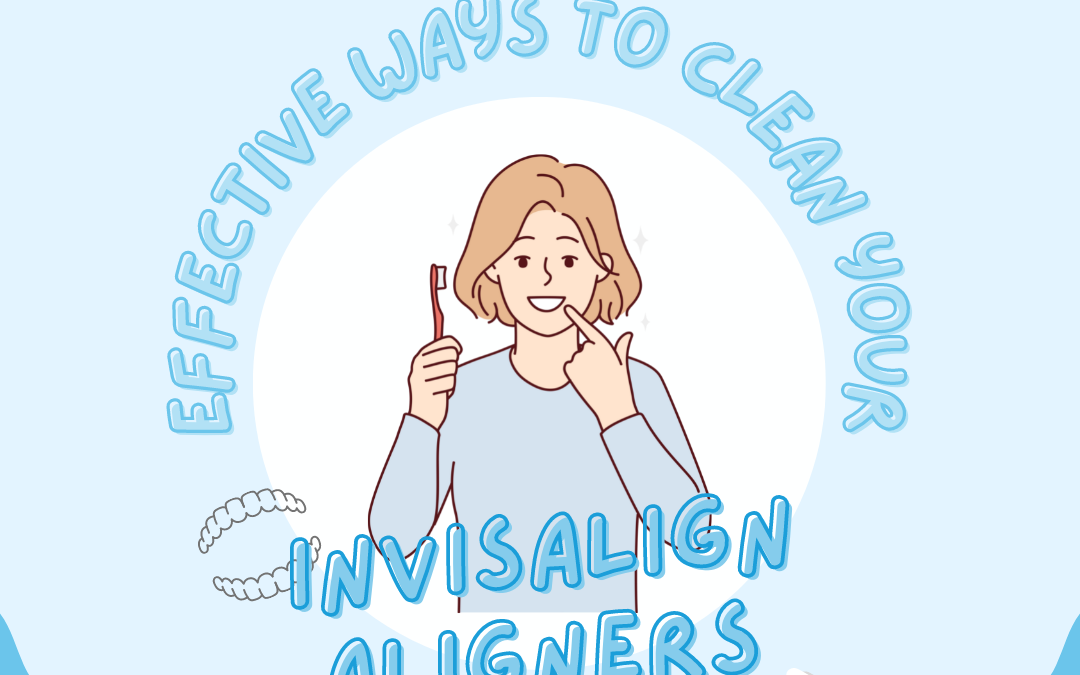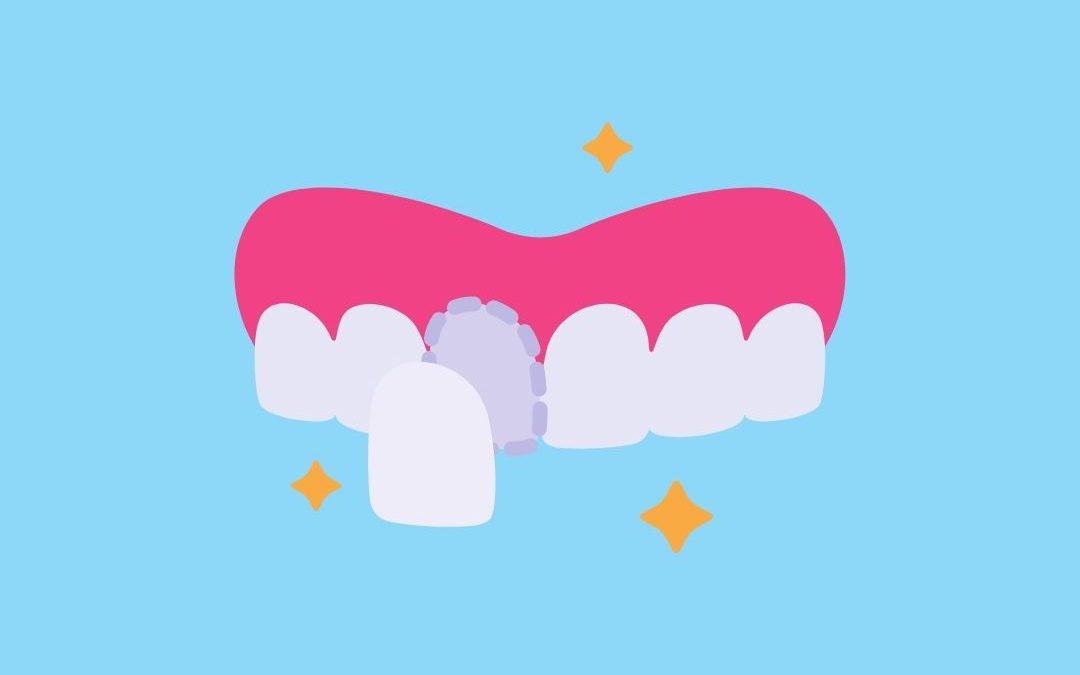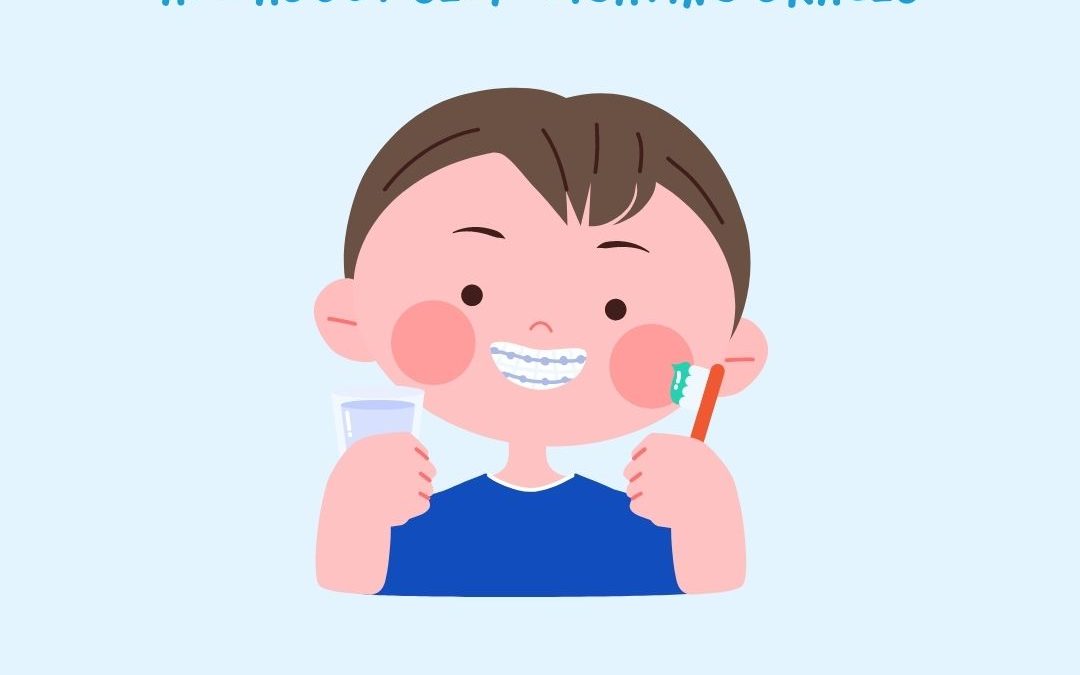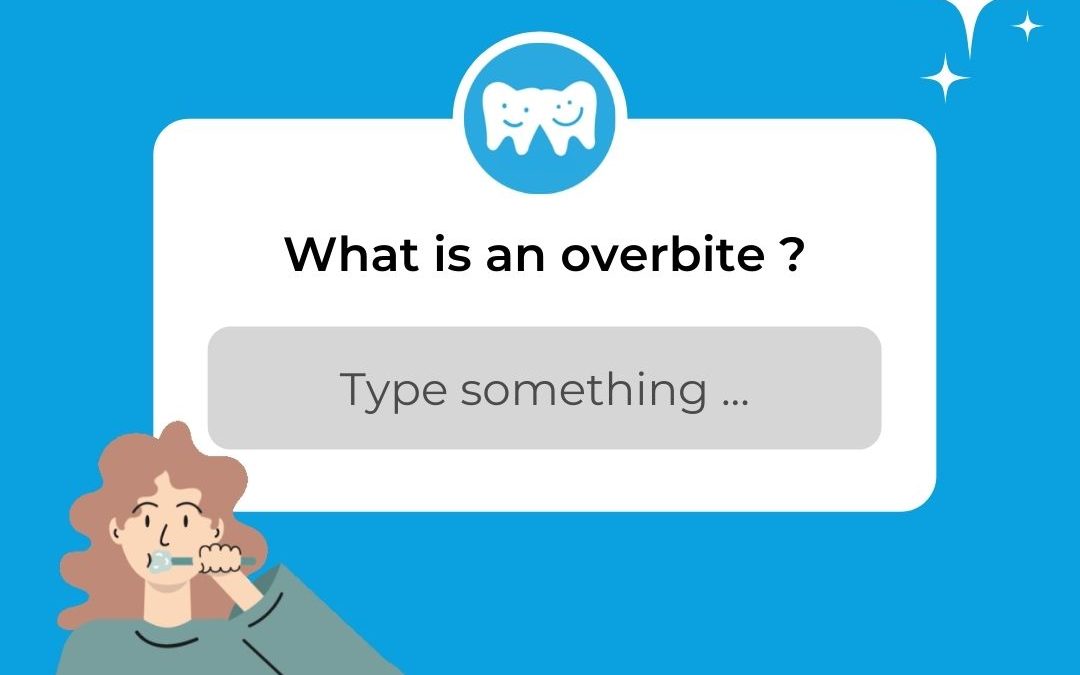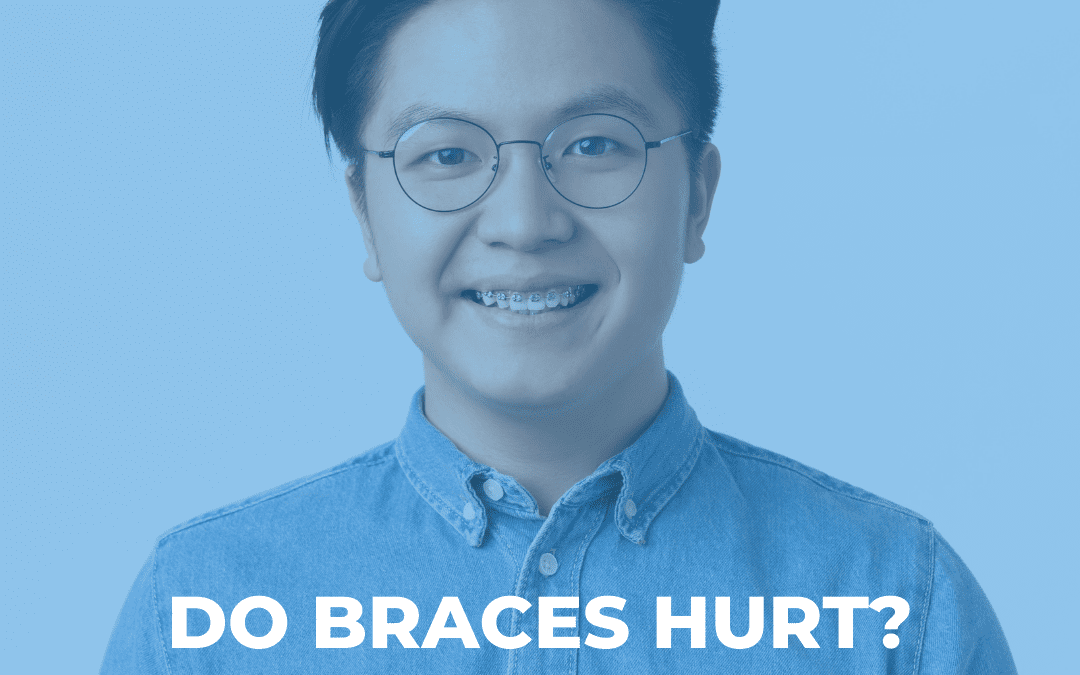Invisalign vs Braces
There are plenty of differences between Invisalign & braces treatment. Understanding which treatment is best for you will ultimately determine your success with either system and the final desired outcome.
Both forms of orthodontic treatment in the hands of a skilled dentist will allow the majority of patients to achieve their desired final results.
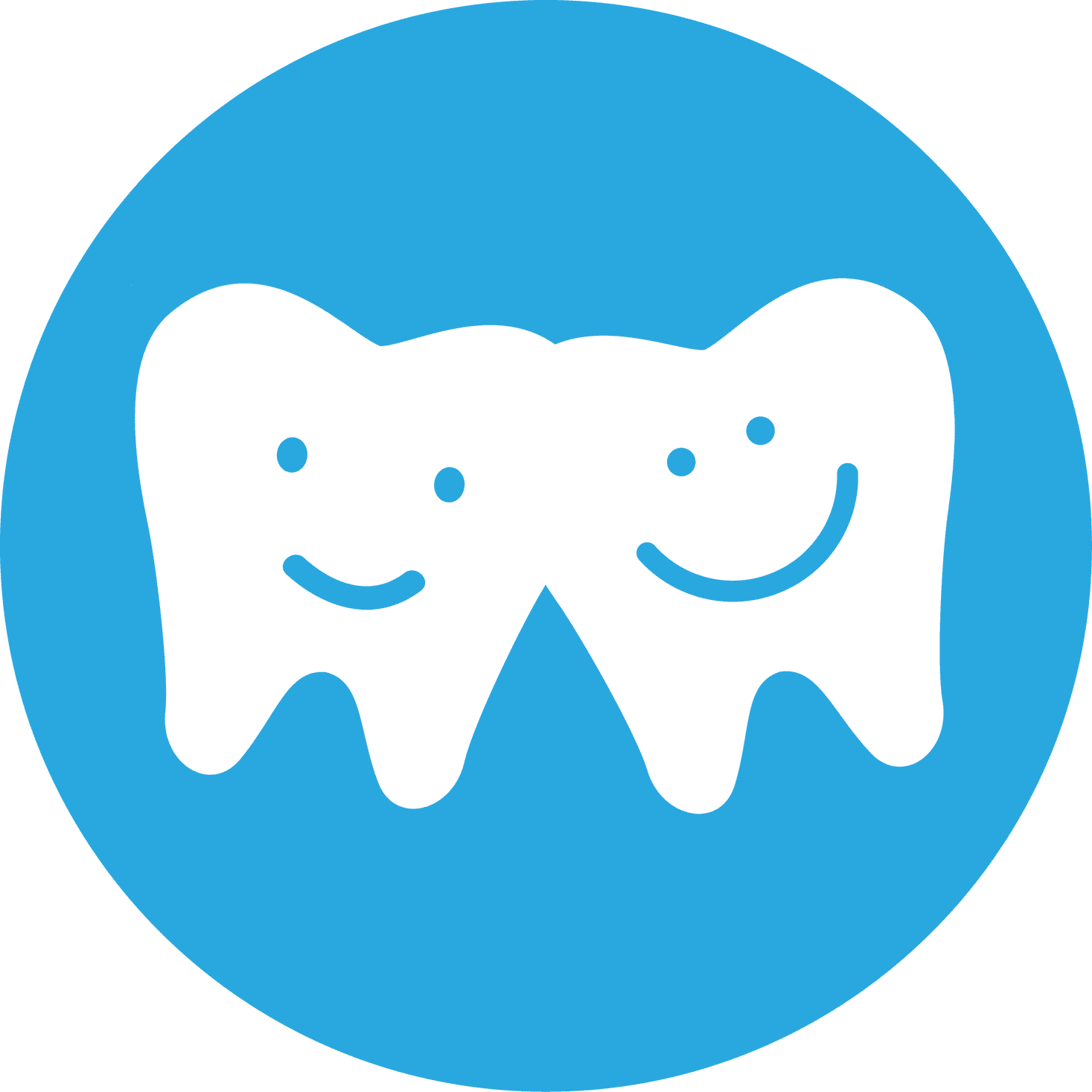
Written by NoFrills Dental
This dental article has been curated by the clinical team @ NoFrills Dental 🙂
September 17, 2020
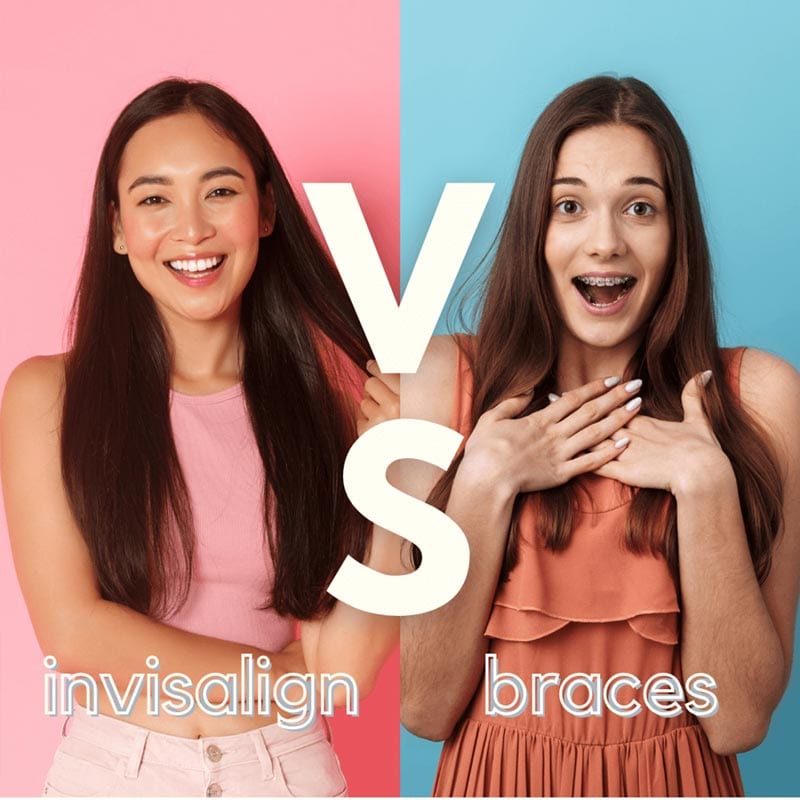
Every patient is unique, with their own unique set of teeth, jaws, needs, requirement and lifestyle. Therefore, it’s only natural that the best orthodontic treatment plan for any patient is a treatment plan that’s tailored and customised specifically to meet the needs of that individual patient.
In this article, we’ll discuss the benefits of both Invisalign and conventional braces, as well as explain the differences between conventional braces and Invisalign, so you can be one step closer to that smile you’ve always dreamed of having!

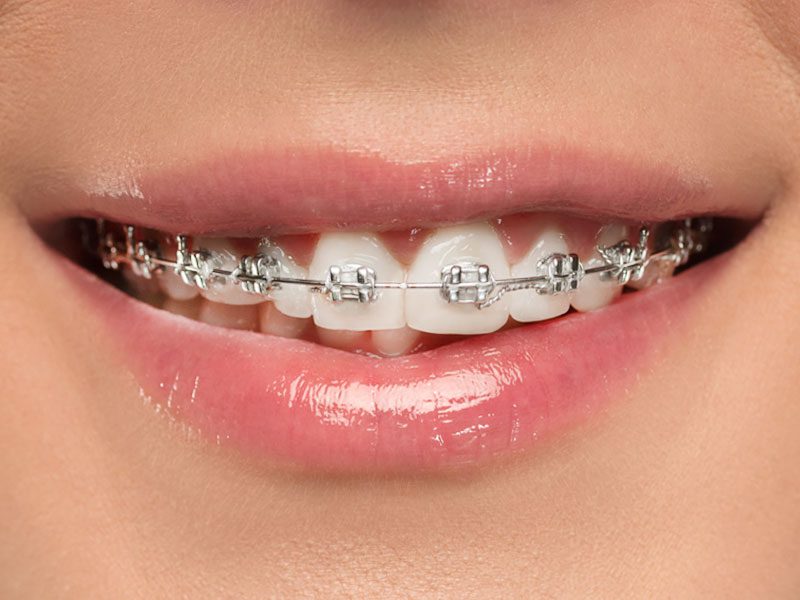
Braces Better Than Invisalign?
For patients who decide to proceed with orthodontic treatment in Singapore, they have many options to choose from, but for most of them it typically boils down to a choice between Invisalign treatment and conventional braces. Moreover, you’ll likely have a number of questions such as: Which treatment is more effective? Which is more affordable?
The thing about both orthodontic systems is that they do more than just straighten teeth; both systems have the capability to address bite issues that often require diagnosis and treatment by a seasoned practitioner.
Here at NoFrills Dental, we firmly believe in patient education and how patients should understand their possible treatment options and treatment process before starting on their journey to a new & improved smile. With that in mind, our dentists design treatment plans that are tailored specifically for each patient that they see.
Overview of Both Systems

Conventional Braces
Conventional braces treatment involves a set of metal/ceramic brackets (the iconic metal things on teeth that every braces patient has during their treatment) which will be permanently cemented to the front/back of every individual tooth throughout the duration of the treatment. These brackets are then connected using a special orthodontic wire which will be tightened in a way that will allow the dentist to adjust each tooth gradually into its desired position as stipulated in the treatment plan.
Depending on the needs of the patient, the dentist/orthodontist will recommend the right type of braces to suit the needs and aesthetic demands of the patient. There are 4 main types of braces available to patients looking at getting their teeth straightened using braces; metal braces, ceramic braces, self-ligating braces and lingual braces.

The Invisalign system on the other hand, is an advanced system for treating most forms of malocclusion. Invisalign is offered as an alternative to conventional braces. The Invisalign system does not require any wires or brackets and also uses the latest computerised technology and 3D modelling to produce a series on customised BPA-free plastic clear aligners which are fully removable and virtually invisible.
Because of the ‘invisible’ appearance of the aligners, many patients know Invisalign as ‘invisible’ braces. They are customarily fabricated to exactly fit a patient’s teeth. The Invisalign system was first introduced by Align Technologies in 1999. While conventional braces have stood the test of time, and have been utilised around the world by thousands of dentists for decades. However, Invisalign is still a highly effective system that is capable of treating many types of orthodontic issues as we’ll discuss further in this article.

Highly Aesthetic & Removable
Generally, the main selling point of Invisalign is that it’s an efficient and effective method of correcting orthodontic issues while being fully removable and virtually invisible. These removable aligners allow patients to eat, brush and floss more comfortably as compared to conventional braces with the added benefit of allowing patients to have their teeth adjusted without anyone having to know that they’re on Invisalign.
This also extends to patients who engage in an active lifestyle, allowing them to comfortably continue with their daily activities with zero hassle or interference, allowing them to continue with their physical activities such as sports without the worry of breaking a dental bracket or snapping a wire. Patients will also be able to eat whatever they like, whenever they like without needing to cut hard to eat foods, such as steak into smaller pieces before eating.
However, patients who are undergoing Invisalign must have the discipline to wear their aligners for 22-24 hours a day, every single day, throughout the duration of their Invisalign treatment, any deviation from this can potentially prolong treatment time. The clear aligners should only be removed when eating, drinking or brushing. Due to the removable nature of the Invisalign system, patient compliance when it comes to actually wearing the clear aligners is paramount in the success of the treatment.

Duration of Treatment & Regular Visits
The entire duration of Invisalign treatment depends on the complexity of the case and the amount of movements required to move teeth to their desired positions. An average treatment duration ranges between 12 – 18 months, but can vary from patient to patient. (Patients on the Dental Monitoring system may experience shorter treatment duration)
Patients on the Invisalign system are typically required to come back for regular dental visits once every 4-6 weeks for a quick check-up. During each visit, patients will be able to see how much closer they’re gotten to achieving their new smile. (Patients on the Dental Monitoring system will usually have a larger time gap between each check-up, up to 8 weeks between visits)
Patients will also change their aligners sets every 7-10 days in order to keep up with the shifting of teeth. This is an important part of the Invisalign treatment process. If a patient skips appointments or doesn’t change out aligners when ready, treatment duration can be prolonged.
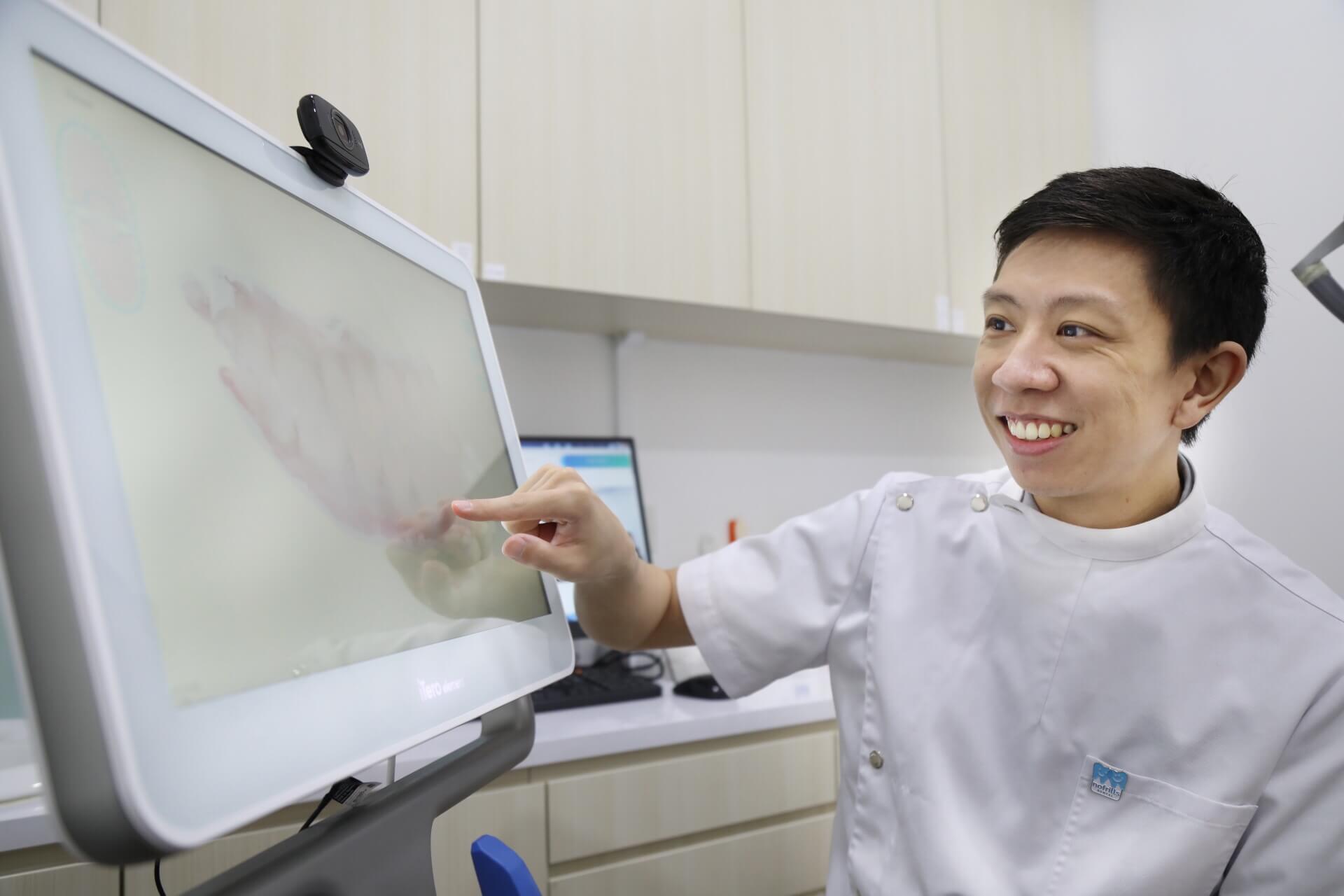
Cost of Invisalign Treatment in Singapore
A common question that our dentists get from patients looking to get their teeth straightened is “how much does Invisalign cost?” or “Is Invisalign cheaper than conventional braces?” vice versa. The cost of Invisalign treatment in Singapore typically ranges from $4500 – $8000 when performed by a general dentist, while the cost of Invisalign lies between $7000 – $9500 for treatment by an orthodontist (specialist dentist that focuses on correcting malocclusion and bite issues ). You can find our more about the cost of Invisalign treatment in Singapore and the breakdown of costs involved with the treatment in a separate article over here.
Due to advances in the 3D scanning/modelling technology and the flexible material technology involved in making Invisalign clear aligners, the cost of Invisalign in Singapore is usually higher when compared to conventional braces. Depending on the complexity of the case, some cases maybe very difficult if not impossible to achieve with Invisalign alone, as such your dentist may discuss the possibility of finalising tooth positions with braces even after Invisalign treatment which will result in a more expensive overall treatment. A comparable type of braces in aesthetic & cost which Invisalign is typically compared to would be lingual (inside, behind the teeth) braces, as they both offer a similar ‘invisible’ appearance. Just like Invisalign, lingual braces are a fully customised solution, as such they’re typically more pricey than normal conventional braces.
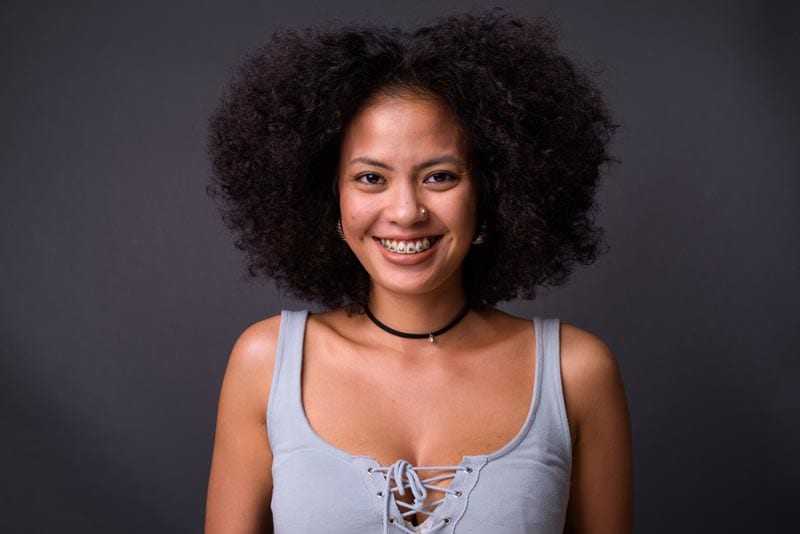
Invisalign Effectiveness vs Braces
The Invisalign system based on the experience of our dentists has the ability to treat most cases of malocclusion even complex ones. However, Invisalign may not always the most effective or efficient treatment method for highly complex cases of malocclusion, as such it’s always not recommended for more complex orthodontic cases.
Before deciding on whether or not you should proceed with Invisalign treatment, please make sure to ask your dentist if you can expect the same result from all possible treatment options pertaining to your case. This will allow you to make an informed decision on which form of treatment is best for you. An experienced and ethical dentist will advise you on the best treatment options for your own specific situation.
If you’d like to speak to one of our Invisalign accredited dentists; feel free to contact us via our support hotline at 9007 1085 or email us at enquiry@nofrillsdental.com or message us directly.
Why Conventional Braces?
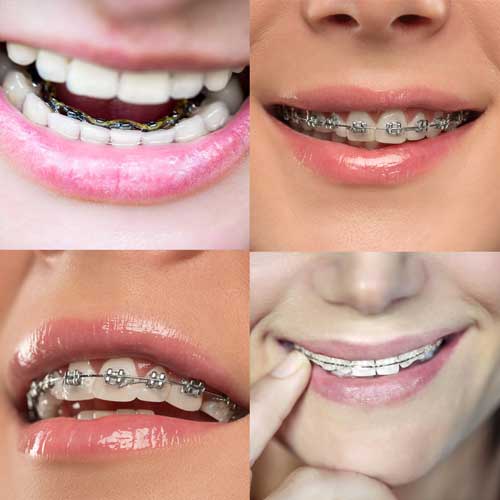
There Are Different Types of Braces Available
There are generally 4 types of braces available to patients in Singapore.
- Metal Braces – The most common kind of braces typically worn by patients who decide to proceed with braces treatment.
- Ceramic Braces – Similar to metal braces, but with a slight difference in the material of the brackets used in the braces treatment. Instead of having metal brackets holding the wires, ceramic braces use a tooth coloured material to hold the archwire, allowing for a more subtle look as compared to metal braces.
- Self Ligating Braces – This braces typically looks almost identical to regular braces with the exception of having no elastics/rubber bands to help move teeth
- Lingual Braces – The ‘invisible’ braces which has the orthodontic brackets installed along the inside of teeth as compared to regular braces which has the brackets installed on the front side of teeth. This type of braces is the most expensive kind of braces and arguably also the most uncomfortable option due to the location of the brackets.
You can read more about the different types of braces here.
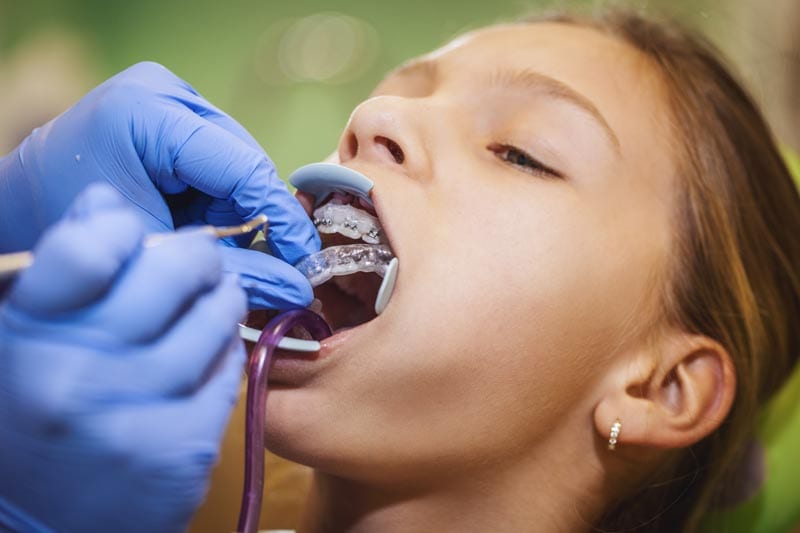
Duration of Treatment & Regular Visits
The entire duration of braces treatment, like Invisalign, depends on the complexity of the case and the number of movements required to move teeth to their desired positions. The average treatment duration ranges between 12 – 18 months but can vary from patient to patient.
There is a common misconception that Invisalign treatment takes a longer duration to achieve similar results when compared to conventional braces. When Invisalign is diligently worn for the right amount of hours every day as instructed by your dentist, there is typically not much difference in the total treatment duration between both systems.
However, our dentists have found that after the novelty of wearing Invisalign clear aligners has worn off. Some patients do have the tendency of becoming lazy with their aligner wear, resulting in delayed/prolonged treatment duration. This would not be an issue with patients on braces treatment, as the constant pull pressure is always acting on teeth, 24 hours a day.
Patients on braces treatment are typically required to come for regular dental visits once every 4 weeks for a check-up and ‘tightening of their braces’. During each visit, patients will have their teeth checked, braces cleaned of any debris and their archwire changed (braces will be further tightened), to continue with the next stage of teeth adjustment.
This is an important part of the treatment process. If a patient skips appointments, treatment duration will be prolonged.

Cost of Braces Treatment in Singapore
The cost of braces is highly dependant on 2 main factors, the complexity of the movements required in achieving the final desired result and the type of braces used for the treatment. As previously mentioned, there are generally 4 types of braces available to patients in Singapore; metal braces, ceramic braces, self ligating braces and lingual braces.
The average cost of braces treatment ranges between S$3,500 – S$6,500 in Singapore.
However, the cost of lingual braces is significantly higher due to the complexity of the system and the ‘custom’ aspect of the treatment. As such, the average cost of lingual braces case ranges between S$5,000 – S$13,000.

Braces Are Better For Complex Cases
When it comes to correcting the most difficult of cases, braces are the clear winning when it comes to down to dealing with complex orthodontic issues (Multiple dental & facial issues that need adjusting/correcting). Braces have the capability to address every single one of those issues, ensuring that patients finish their treatment with a brand new and incredible smile. Through the use of ‘anchors’ in the form of orthodontic brackets which are cemented on the front/back of teeth and an archwire; braces apply constant ‘pull pressure’ on teeth to move them into their desired positions.
Braces are the more powerful treatment method when it comes to moving teeth into the desired position.
Through braces, patients have the possibility of achieving a ‘perfect final result’ which is quite often better than the final result achieved in patients opting for Invisalign treatment. With braces, there is a constant ‘pull pressure’ being applied on teeth, forcing the teeth to move into the desired position, unlike Invisalign which is limited in terms of how much each tooth can be moved at a time.
In order to better understand which type of braces is best suited for your case, you’ll need to speak to an experienced dentist who is familiar with orthodontic treatment. Feel free to contact us via our support hotline at 9007 1085 or email us at enquiry@nofrillsdental.com or message us directly. to get in touch with our dentists.
Here’s a summary between the two treatment options.
Both systems have their pros and cons. All patients who are looking to get started on their Invisalign or Braces journey should consult their dental provider for more details on either system. An experienced dentist will be able to advise you on which system is best suited for your case.
Feel free to contact us via our support hotline at 9007 1085 or email us at enquiry@nofrillsdental.com or message us directly. to get in touch with our dentists.
| Invisalign | Conventional Braces | |
| Appearance | Virtually Invisible & Clear. | Metal or ceramic braces cemented on the outer/inner surfaces of teeth. |
| Ease of Maintenance | Easy maintenance as aligners can be fully removed when brushing. Aligners will also be changed once every 10 days. | More difficult in maintaining good oral hygiene as food gets stuck quite easily, more time will be required during brushing and flossing. |
| Duration of Treatment | 12 months – 18 months on average. Duration will increase based on the complexity of the case. (Duration may increase if patients are not compliant with wearing their aligners as instructed by their dentist) | 12 months – 18 months on average. Duration will increase based on the complexity of the case. |
| Dietary Requirements | No change in diet required as aligners are removable when eating. | Patients are advised to avoid eating hard or sticky foods. It is also recommended to cut food up into smaller pieces at times. |
| Breakage of Device | Sometimes breaking of the aligners may occur, when there is too much pressure putting on or removing aligners. Attachments may dislodge, which will require attention as soon as possible, requiring a visit to the dentist to replace the dislodged attachment. | If are not careful when eating, orthodontic brackets can break off, or the wire may distort, requiring an extra visit to the orthodontist. Sometimes a broken wire may cut into soft tissue in the mouth, requiring an emergency dental visit to relieve the pain. |
| Comfort Level | Less initial pain, forces are applied gradually over the period of wear for each set of aligners. | More initial force on the teeth after adjustment hence more initial pain. |
| Frequency of Check Up | Less frequent visit required, range from 1 – 2 months. | Every 4 weeks/once a month. |
| Treatable Cases | Difficulty with complex cases such as very deep bite cases, cases requiring jaw surgery. | Able to treat all types of cases, regardless of complexity. |
| Patient Compliance | Very dependent on good aligner wear of 20 – 22 hours per day. Good oral hygiene required. | Minimal compliance required with braces but very good compliance required when maintaining good oral hygiene. |
| Retainer Wear After Treatment | Yes. Absolutely. | Yes. Absolutely. |
| Average Cost of Treatment | S$4,500 – S$9,500 |
Metal: S$3,500 – S$5,000 |
Looking to learn more about Invisalign or Braces?
Download our Invisalign or Braces Guidebook.
So, What’s Next?
If you’ve got more questions about Invisalign Treatment in Singapore. You can read up more on our dedicated page on Invisalign Treatment in Singapore, and Braces Treatment in Singapore, you could contact us directly to speak to one of our Invisalign accredited providers or braces dentists.
We would suggest for you to speak to one of our dentists. Our dental professionals providers are experienced, ready to answer all your queries, and will discuss all the possible treatment options available for you.
At the end of the day, we believe that the right dentist for you is the one who will lay out all your treatment options on the table, allowing you to make informed decisions, while ensuring that your entire treatment process is as enjoyable, comfortable and hassle-free as possible. Good communication between you and your dentist is the best way to ensure a smooth and successful treatment.
In addition, please only proceed with the treatment if you are fully comfortable with the treatment plan proposed by your provider.
Talk to Us Today!
Related Posts
Effective ways to clean your Invisalign Aligners
The advanced technology of Invisalign aligners has made them a hugely popular alternative to braces for straightening teeth, among teens and adults alike. These clear plastic appliances are more comfortable and virtually unnoticeable in the mouth, and have the further advantage of removability for brushing and flossing and meals and snacks. And they can fix less complex orthodontic problems up to twice as fast as braces.
What to Do if Your Veneers Fall Off?
Porcelain veneers are a popular cosmetic dental treatment that transforms the appearance of chipped, cracked, gapped or stained teeth. Dental veneers – tooth-coloured, ultra-thin shells that are attached to the front of teeth – can last up to 15 years with proper care.
What are Self-ligating Braces?
Self-ligating braces consist of just brackets and wire, eliminating the need for ligatures. Self-ligating brackets act like sliding doors, using a system built into the bracket itself to hold the archwire.
Conventional Braces
Traditional braces remain a popular choice for straightening teeth, despite the rise of plastic aligners like Invisalign. Braces are more affordable and more effective, particularly in complex orthodontic cases.
What Is An Overbite?
Overbite – or retrognathism – occurs when the upper teeth overlap the lower teeth too much. Overlap of a couple of millimetres is regarded as normal but when it’s more than four millimetres it may require professional medical attention to avoid complications.
Do Braces Hurt?
Braces may at times cause discomfort of varying levels over the course of treatment but overall it’s usually not too bad. And there are steps you can take to ease any soreness. Most people get used to their braces in about a month. After six months, you may not even notice them, although you might experience some tenderness from time to time. Here, you’ll find out when and why braces could hurt a little, and how you can deal with it.

